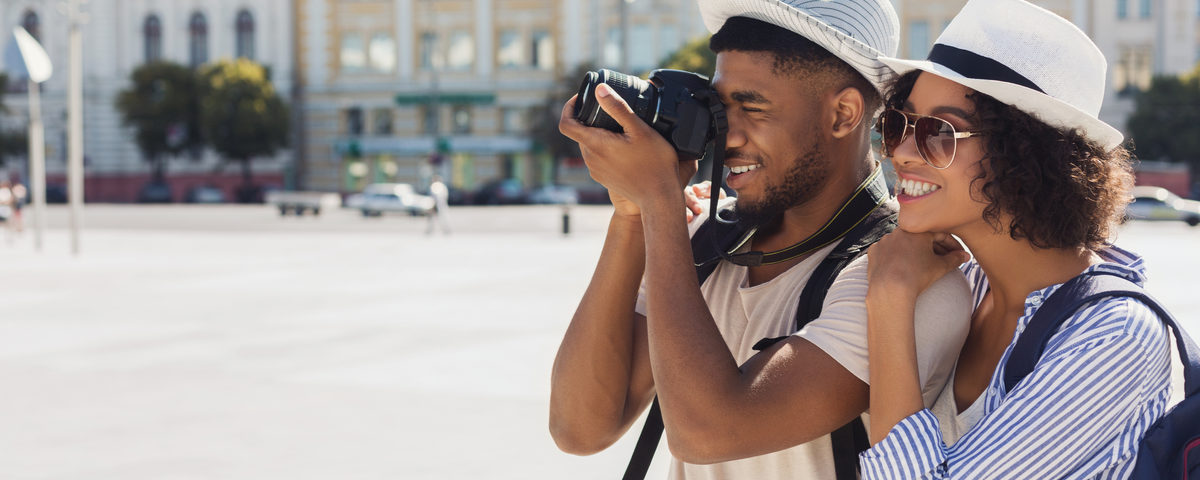This month has brought new focus to Black Lives Matter, and the everyday racism many black people still experience. When it comes to the travel industry, there’s a lot more that could be done to combat racism and encourage inclusivity. Here’s how some black influencers think the industry could change for the better:
How can racism impact people’s travel experience?
Whether you’re aware of it or not, the colour of someone’s skin can have an impact on their travel experiences. Whether it’s having people take photos of you and try to touch your hair or having racial slurs shouted at you, the experience for black travellers can sometimes be a far cry from the trip they dreamed of. Eulanda, who runs Hey! Dip Your Toes In with her husband, has experienced her fair share of micro-aggressions while travelling.
“Travelling as a Black woman constantly requires me to navigate between being invisible and hyper-visible. Despite travel fostering cross-cultural interactions and deep connections, travel has also exposed me to micro-aggressions, exoticism, and non-consensual touching of my hair/body.
“How often do my fellow white colleagues have their hair searched when passing through airport security? Although this doesn’t happen in every country I visit, I step into many global airports prepared to comply with this invasive security screening simply because of the visibility of the hair on my head. Despite a catalogue of negative experiences, the positive interactions and experiences I encounter whilst travelling often outweigh any negative ones.”
Erick Prince, who runs Minority Nomad, feels that his race sparks curiosity that can then be used to educate people: “My travel experience has benefited from my race because I’m a travel photographer.
“People tend to be curious when they haven’t interacted with many African Americans. I use that curiosity to bridge cultural and language gaps.”
Is there a lack of diversity in travel campaigns?
Looking at many travel press trips and campaigns you might notice a lack of black journalists and creators. Although black travellers are estimated to spend $50-60 billion on travel annually, they often aren’t considered when it comes to marketing a brand or destination.
“It takes little effort to see this simple truth. The travel industry lacks diversity in regards to race and physical ability from press trips to destination ads.” says Erick.
Eulanda also feels the lack of inclusivity on press trips and campaigns is obvious, and it’s something that brands and destinations need to change right now: “The lack of diversity within travel campaigns is glaringly obvious. Talk to any POC (people of colour) journalist or content creator and they’ll have at least one thing in common; that they’ve been the only POC on the majority of group press trips.
“Even when we are hired by a brand to create content for a commercial travel campaign, it’s extremely rare to see more than one or two POC out of the (maybe) 5-10 creators who’ve been hired. Additionally, not only is there a lack of representation, but whenever brands do hire POC, many pay them less than white creators. All of the above has happened to both my husband and myself more times than we could ever be comfortable with.”
How can travel destinations and brands combat racism?
There’s many ways that destinations and brands can combat racism and be more inclusive in their marketing campaigns. From transparency about employee race demographics to seeking out a more diverse pool of creators and journalists to work with, the important thing now is that brands actively work towards being more inclusive.
“Following the tragic death of George Floyd, travel brands like Conde Nast, AFAR, and others have publically shared that they’ve been complicit in the erasure of Black and POC voices through the lack of representation both internally and externally. Many brands have released statements of solidarity and shared their racial justice action plans to initiate systemic change,” says Eulanda.
“For brands wondering if they should release a statement or not, this is a great time to look at your company closely and ask many pertinent questions: How many POC are employed in your organisation? How many POC hold executive roles? Do you consistently seek out POC representation for the events, keynote speakers, panels, and tradeshows you host? Does your organisation support POC charities, mentor/internship programs? Do the visual optics of our brand (i.e. social media) match our narrative within our internal organisation?
“Upon answering these questions, it should be clear what work really needs to be done within your organisation. It’s ok to seek help. Reach out to Diversity & Inclusion consultants who can help you with your D&I objectives. Diversity and equity within the travel industry will not be achieved by being silent.”
Erick thinks more of a focus on the quality of content, rather than follower count, would help brands and destinations to diversify who they work with: “In regards to influencers, the problem is brands/destinations focus too much on follower counts and not enough on quality of work.
“Making that shift would make campaigns more diverse and beneficial for travellers and brands. Ensuring the teams making branding decisions are diverse will also allow for ads and campaigns to become more inclusive.”
You may also be interested in…
- How to develop a hashtag strategy for your travel brand
- Will influencer marketing help brands to bounce back post-coronavirus?
- Embracing video to build your brand in times of uncertainty


